TTTT: An American Film Geek's Bottom 10 for 2012

But, it must be said, there's a grain of application to what we're
dealing with here. While it is a critic's job to point out what to
avoid as much as which art to celebrate, the former aspect can be a
dicey one, lest we become the judgmental blowhards we're so often dismissed as.
So, with that in mind, I present my own list of the Ten 2012 Films To Be Avoided, in order of stinkatude. The good news is that of the 136 2012 film releases I've seen and considered to date, only these nine truly bothered me. At times, I opt to quote my own ZekeFilm and ScreenAnarchy reviews, the full versions of which can be read by clicking the highlighted title links. Just remember, this is not vengeance, it's a warning. Heed it well...
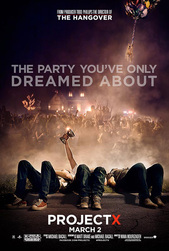 1. Project X - The
first evidence of the digital revolution in cinema gelled over a decade
ago when the first "camcorder movies" began to materialize as bona fide
hits at the multiplex. These inexpensive movies have proven
financially appealing to film studios for obvious reasons: They are
quick and cheap to make, and tend to have no pricey talent in the mix.
The best of them are inescapably clever, trading in the fact that the
visuals we're seeing were supposedly shot by characters that exist
within the story. (Paranormal Activity, or this year's terrific early surprise, Chronicle.) The worst of them result in pandering, insulting, tossed-off schlock. In 2012, X marked that spot.
1. Project X - The
first evidence of the digital revolution in cinema gelled over a decade
ago when the first "camcorder movies" began to materialize as bona fide
hits at the multiplex. These inexpensive movies have proven
financially appealing to film studios for obvious reasons: They are
quick and cheap to make, and tend to have no pricey talent in the mix.
The best of them are inescapably clever, trading in the fact that the
visuals we're seeing were supposedly shot by characters that exist
within the story. (Paranormal Activity, or this year's terrific early surprise, Chronicle.) The worst of them result in pandering, insulting, tossed-off schlock. In 2012, X marked that spot.
The film's marketing tethered it to the makers of The Hangover, although the staged teen anarchy of Project X lacks any of that film's charm, bite, or believability. Perhaps worst of all, for a comedy, it is not only not funny, it is the opposite of funny. (The true opposite of "funny" not being "serious" so much as " gratingly soul sucking".) Beyond that, it's simply glaring anti-cinema, offensive to the sensibilities of anyone with any combination of good taste, brains, or value for one's time.
I read the other day that Project X was the most illegally downloaded movie of 2012. A somehow fitting fate for it, even if that also demonstrates a frightening demand for this piece of junk among its targeted younger set. The possibility that this movie about the benefits of throwing the biggest, most decadent, loudest, party (complete with an under-the-radar Hollywood production budget to fuel every wild party movie cliche - lapdogs getting tossed about, vomiting, midget abuse, cheap sex thrills, more vomiting, jumping off the roof into the pool, and finally, the grand inevitability, dad's beloved pricey car in the pool) is a hit on some level is just plain scary.
A blight on the resume of all involved, Project X is a camcorder movie gone as wrong as possible; a digital worst case scenario.
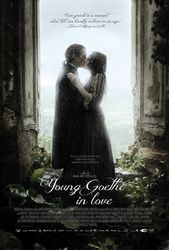 2. Young Goethe in Love - A transparent German redo of Shakespeare in Love,
this hollow bit of historical fiction is as lifeless and dull as
unenlightened high school students find Johann Wolfgang von Goethe's
actual writing to be. It tries to start off as a flighty,
over-saturated period costume charmer, but then, by virtue of the actual
story (I'll assume as much, anyhow - and that's giving this one the
benefit of the doubt), it turns depressing, dour, and devoid of much
hope. Neither approach works, as the weak execution all around is not
so monstrously Faustian as it is a snake eating its own tale. The end
result is a write-off into the worst territory a film reside - that of
boooooooredom...
2. Young Goethe in Love - A transparent German redo of Shakespeare in Love,
this hollow bit of historical fiction is as lifeless and dull as
unenlightened high school students find Johann Wolfgang von Goethe's
actual writing to be. It tries to start off as a flighty,
over-saturated period costume charmer, but then, by virtue of the actual
story (I'll assume as much, anyhow - and that's giving this one the
benefit of the doubt), it turns depressing, dour, and devoid of much
hope. Neither approach works, as the weak execution all around is not
so monstrously Faustian as it is a snake eating its own tale. The end
result is a write-off into the worst territory a film reside - that of
boooooooredom...
 3. John Carter - Respected
Pixar director Andrew Stanton ventured into live action for a massively
budgeted adaptation of author Edgar Rice Burroughs' heretofore
neglected science fiction adventure touchstone, the John Carter series.
The brain-numbing result made him the year's biggest cinematic whipping
boy, his film almost universally panned. Money is everywhere,
storytelling confidence and interesting characters are lost in space.
3. John Carter - Respected
Pixar director Andrew Stanton ventured into live action for a massively
budgeted adaptation of author Edgar Rice Burroughs' heretofore
neglected science fiction adventure touchstone, the John Carter series.
The brain-numbing result made him the year's biggest cinematic whipping
boy, his film almost universally panned. Money is everywhere,
storytelling confidence and interesting characters are lost in space.
Imagine 1980′s Flash Gordon movie without the Queen soundtrack but the same storyline. Replace all the intentional cornball camp and eye-popping artifice with a serious tone and today's more-real-than-real visual effects. Swap out Max von Sydow's bald, scenery-chewing Ming for Mark Strong's bald, unmemorable Matai Shang. Then add an hour. Do all that, and you get something resembling Disney's now-infamous venture into PG-13 action/adventure, John Carter, a disaster that won't soon be forgotten.
 4. The House at the End of the Street - A
cinematic building inspector could produce a long list of code
violations in this blighted "horror" effort, but let's keep thing
simpler, shall we? The House at the End of the Street's
foundation (the screenplay) is an idea that, at one time, might've
passed muster to make a decent film, but the version that was filmed has
all the tension sucked out of it, a series of twisty pathways looking
for a floor plan. Imagine Psycho if there were numerous early
scenes of Norman grooming his dead mother, and then ask yourself how
that would effect the climax. Then you get some idea of this dull mess.
4. The House at the End of the Street - A
cinematic building inspector could produce a long list of code
violations in this blighted "horror" effort, but let's keep thing
simpler, shall we? The House at the End of the Street's
foundation (the screenplay) is an idea that, at one time, might've
passed muster to make a decent film, but the version that was filmed has
all the tension sucked out of it, a series of twisty pathways looking
for a floor plan. Imagine Psycho if there were numerous early
scenes of Norman grooming his dead mother, and then ask yourself how
that would effect the climax. Then you get some idea of this dull mess.
Perhaps I did the film's star Jennifer Lawrence a very minor favor by not mentioning her involvement with this one until this second paragraph of my dismissal of the film, but something tells me that the tremendously talented Hunger Games and Silver Linings Playbook star will land on her feet. Shot and then shelved several years ago, House at the End of the Street is a dilapidated eyesore that someone saw fit to haphazardly slap a fresh coat of paint onto, and call it a thing. No need to stare, there's nothing to see here.
 5. Darling Companion - With the autobiographical Darling Companion, respected writer/director Lawrence Kasdan (The Big Chill, Silverado, Grand Canyon)
came in from a decade-plus creative hiatus claiming to be interested in
exploring the deep bond between pets and their owners. That's an
intriguing enough notion, but there's no proof of it on screen.
Instead, we have an irritating clan of wealthy bubble-dwellers led by
matriarchal Diane Keaton (up to her old tricks, annoyingly) and Kasdan
perennial Kevin Kline wandering through the woods for days, stopping the
steady flow of pained wisecracks only to repeatedly call out for the
missing pooch.
5. Darling Companion - With the autobiographical Darling Companion, respected writer/director Lawrence Kasdan (The Big Chill, Silverado, Grand Canyon)
came in from a decade-plus creative hiatus claiming to be interested in
exploring the deep bond between pets and their owners. That's an
intriguing enough notion, but there's no proof of it on screen.
Instead, we have an irritating clan of wealthy bubble-dwellers led by
matriarchal Diane Keaton (up to her old tricks, annoyingly) and Kasdan
perennial Kevin Kline wandering through the woods for days, stopping the
steady flow of pained wisecracks only to repeatedly call out for the
missing pooch.
We're told that the situation is urgent enough to shelve everyone's lives and careers waiting to resumed at home in the city, but all we're ever shown is strained inconvenience, never heartbreak. The only indication of affect is Diane Keaton's character's shift from the typically grating autopilot Diane Keaton to a clammed up bundle of nerves - a worthy exchange for the dog. Kasdan's creative interests sound valid, but all I can see is an affirmation of his own personal wealth and security. That wealth and security is well earned, but finding the answer to what we the audience did to earn Darling Companion as Kasdan's long-awaited return is a whole other pointless wild goose chase.
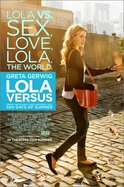 6. Lola Versus - Take
everything that's clichéd, dull and wrong-headed about American
independent film, over boil it in a pot of tepid tap water, and you've
got a pretty good bead on Lola Versus. Born in the fading shadow of once-popular TV programs like "Sex in the City" and "Friends", Lola Versus
is the exact kind of low budget cookie-cutter tripe posing as a hip,
young indie film that drives this critic mad. Lola, the film's titular
single-girl-in-crisis, is played by the always talented and charming
Greta Gerwig, who is sadly squandered here. Provocative character study
or feature length situation comedy?
6. Lola Versus - Take
everything that's clichéd, dull and wrong-headed about American
independent film, over boil it in a pot of tepid tap water, and you've
got a pretty good bead on Lola Versus. Born in the fading shadow of once-popular TV programs like "Sex in the City" and "Friends", Lola Versus
is the exact kind of low budget cookie-cutter tripe posing as a hip,
young indie film that drives this critic mad. Lola, the film's titular
single-girl-in-crisis, is played by the always talented and charming
Greta Gerwig, who is sadly squandered here. Provocative character study
or feature length situation comedy?
Lola's dilemma (plight of the modern cast-off single girl) is a potentially worthwhile conundrum for movie fodder, but in this case, it lacks any meaningful introspection and weight. It portents "edginess", what with its frequent f-bombs, sex talk, and "acceptable lewdness". And yet, it refuses to be truly graphic. In the LOLA VERSUS world, pole dancers perform in bikinis and everyone has sex in their underwear. This observation is not a complaint in search of rawer content, but rather an observation of the film's pervasive disingenuousness.
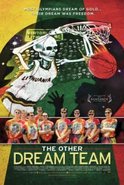 7. The Other Dream Team - The sports documentary The Other Dream Team
chronicles the fascinating tale of the 1992 Lithuanian Olympic
basketball team, and their connection to the band The Grateful Dead.
Instead of simply letting this story play out as a more intimate rags to
riches (or more apropos, nothing to greatness) international athletics
story -- allowing it to be something truly about the hopes and dreams of
these basketball players, realized or not -- it insists on laying a
sprawling canvas of world events over everything, an attempt that fails.
7. The Other Dream Team - The sports documentary The Other Dream Team
chronicles the fascinating tale of the 1992 Lithuanian Olympic
basketball team, and their connection to the band The Grateful Dead.
Instead of simply letting this story play out as a more intimate rags to
riches (or more apropos, nothing to greatness) international athletics
story -- allowing it to be something truly about the hopes and dreams of
these basketball players, realized or not -- it insists on laying a
sprawling canvas of world events over everything, an attempt that fails.
Confounding such issues is the fact that The Other Dream Team is clunky - an attribute that is never good in film, particularly one about a basketball team. It's uneven in use of music, transitions, and overall directorial tone; messy and at times even amateurish. The film is yet another regrettable example of a documentary in which they got the interviews with most of the key players but fail to appropriately utilize them. It's like striking gold only to spend it on a wet mud hut.
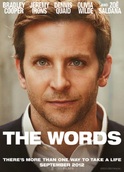 8. The Words - Films
that dare to explore the nuanced art of writing - indeed, the mind of
The Writer - are dicey endeavors, always. This thankless Bradley Cooper
vehicle (his last in a long line before his vindicating Silver Linings Playbook)
fails to conjure its goal of literary enamorment, instead projecting
irritating and empty self-importance. Forced, artificial cleverness
permeate this flat character study that can't decide if it wants to be a
plagiarism-fueled morality tale or a layered bout of internal struggle.
8. The Words - Films
that dare to explore the nuanced art of writing - indeed, the mind of
The Writer - are dicey endeavors, always. This thankless Bradley Cooper
vehicle (his last in a long line before his vindicating Silver Linings Playbook)
fails to conjure its goal of literary enamorment, instead projecting
irritating and empty self-importance. Forced, artificial cleverness
permeate this flat character study that can't decide if it wants to be a
plagiarism-fueled morality tale or a layered bout of internal struggle.
I could say more, but SWEET MOTHER OF MAUI! That poster is the creepiest thing I've seen all week!! It actually looks like Cooper fell asleep on his side in a tanning bed. Either that, or we're looking at a too-seamless blending of two faces into one, an uncanny valley of complete uselessness. No, the film is not quite as bad as this poster. But it does come very, very close.
 9. El Bulli: Cooking in Progress - In the German documentary El Bulli: Cooking in Progress,
renowned Spanish chef Ferran Adrià, proprietor of the world famous
restaurant elBulli, espouses the values of true avant-garde cooking to
the nth degree. The movie, however, with its sharp video aesthetic, maintains
an improper vibe of stark, cold, flavorlessness. Director Gereon
Wetzel maintains a fly-on-the-wall gaze at the process of Adrià, who,
with his oddball techniques (vacuumizing ingredients??) and obsessive
focus, is far more of a mad scientist in the kitchen than he is a
traditional chef. When it comes to this aspect of El Bulli,
the film works well enough. But the fact remains that once the 108
minute doc was over, I was still hungry for basic information about El
Bulli, but not hungry for the food.
9. El Bulli: Cooking in Progress - In the German documentary El Bulli: Cooking in Progress,
renowned Spanish chef Ferran Adrià, proprietor of the world famous
restaurant elBulli, espouses the values of true avant-garde cooking to
the nth degree. The movie, however, with its sharp video aesthetic, maintains
an improper vibe of stark, cold, flavorlessness. Director Gereon
Wetzel maintains a fly-on-the-wall gaze at the process of Adrià, who,
with his oddball techniques (vacuumizing ingredients??) and obsessive
focus, is far more of a mad scientist in the kitchen than he is a
traditional chef. When it comes to this aspect of El Bulli,
the film works well enough. But the fact remains that once the 108
minute doc was over, I was still hungry for basic information about El
Bulli, but not hungry for the food.
More of an impersonal procedural than a foodie's passion project, El Bulli has all the ingredients it needs to fulfill its basic recipe, but lacks the presentational finesse necessary to make it a great all around documentary meal. Perhaps I'm just channeling some sort of inner Adrià when I say that El Bulli could be sent back to the lab for more character, more flavor, and maybe a dash of film grain. And maybe a round in the vacuumizer, for good measure.
So that's my list of the Worst Films of the Year. I confess that I took some pleasure in calling out some of them, but for the most part, I just needed to issue the warning. BUT WAIT! We're not done!!! As far as movies in an of themselves go, the list above is a what-you-see-is-what-you-get tick-off. But beyond that, the single worst movie watching experience of 2012 goes to an old world fuzzy-footed epic that dared to push the technological envelope in ways too atrocious to go unchecked. Proving that a film's frame rate can in fact be a moral issue,
MY NUMBER ONE WORST FILM-GOING EXPERIENCE I'VE ENDURED ALL YEAR IS...
 Now,
before anyone opts to banish me to the Lonely Mountain, let me make it
clear that this is singling-out is not indicative of Peter Jackson's
bloated first-act Lord of the Rings prequel. (Although, its
bloated first act status goes a long way in earning the 2D version of
the film it's current #95 ranking on my 2012 list of 136 films.) Most
folks will likely never have the opportunity or pressing desire to
experience The Hobbit: An Unexpected Journey in horrific
more-real-than-real HFR 3D (high frame rate - filmed and projected at 48
frames per second, and, of course, in 3D), it's director Peter
Jackson's preferred viewing method. All the better, considering that
the glaring, reductive video crispness of the experimental new
technology is inherently more anti-cinema than anything about Project X.
Now,
before anyone opts to banish me to the Lonely Mountain, let me make it
clear that this is singling-out is not indicative of Peter Jackson's
bloated first-act Lord of the Rings prequel. (Although, its
bloated first act status goes a long way in earning the 2D version of
the film it's current #95 ranking on my 2012 list of 136 films.) Most
folks will likely never have the opportunity or pressing desire to
experience The Hobbit: An Unexpected Journey in horrific
more-real-than-real HFR 3D (high frame rate - filmed and projected at 48
frames per second, and, of course, in 3D), it's director Peter
Jackson's preferred viewing method. All the better, considering that
the glaring, reductive video crispness of the experimental new
technology is inherently more anti-cinema than anything about Project X.
HFR must be rejected outright, lest this unasked-for detrimental eyesore-inducing format drag movies down to the level of younger, lesser evolved art forms such as video games and television. In a movie year marked by various types of on-screen disaster, this would be greatest cataclysm of them all. For far more of my fleshed-out thoughts on this, read my editorial on The Hobbit HFR 3D.

Ready to cleanse the palette? Don't miss my Top Ten Films of 2012. (And please see that I'm no enemy of the use of innovative new technologies when put to effective cinematic use...)







